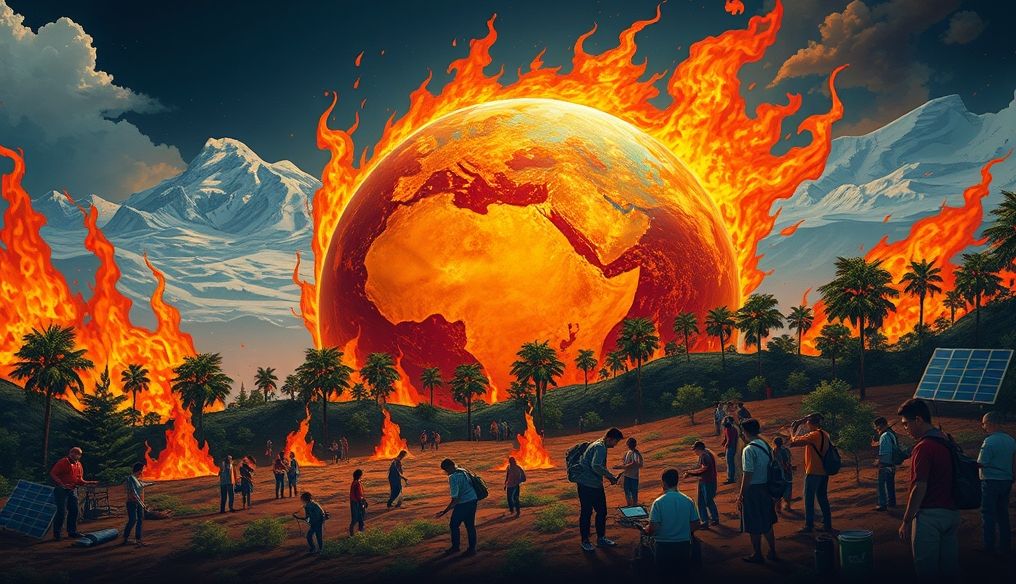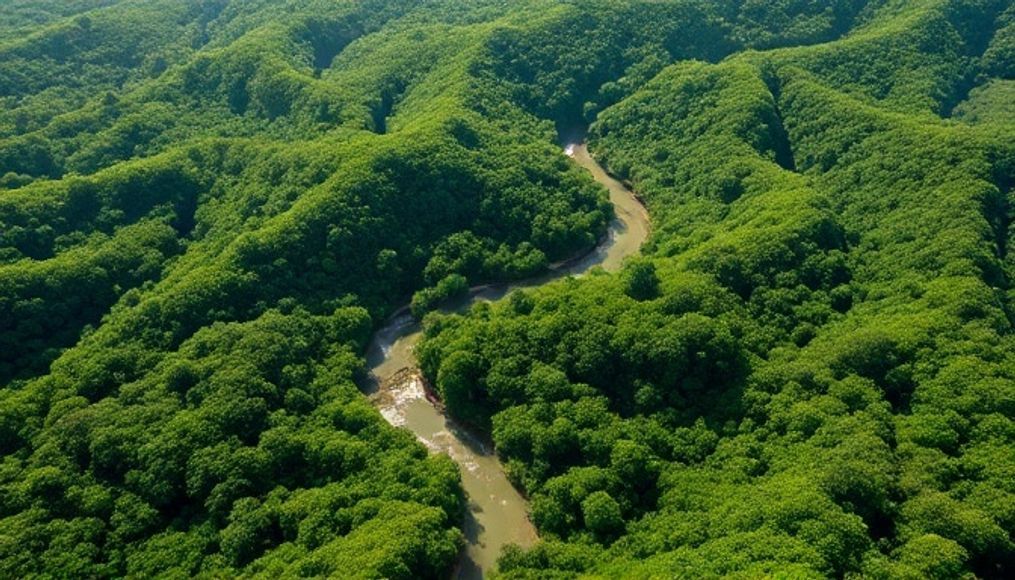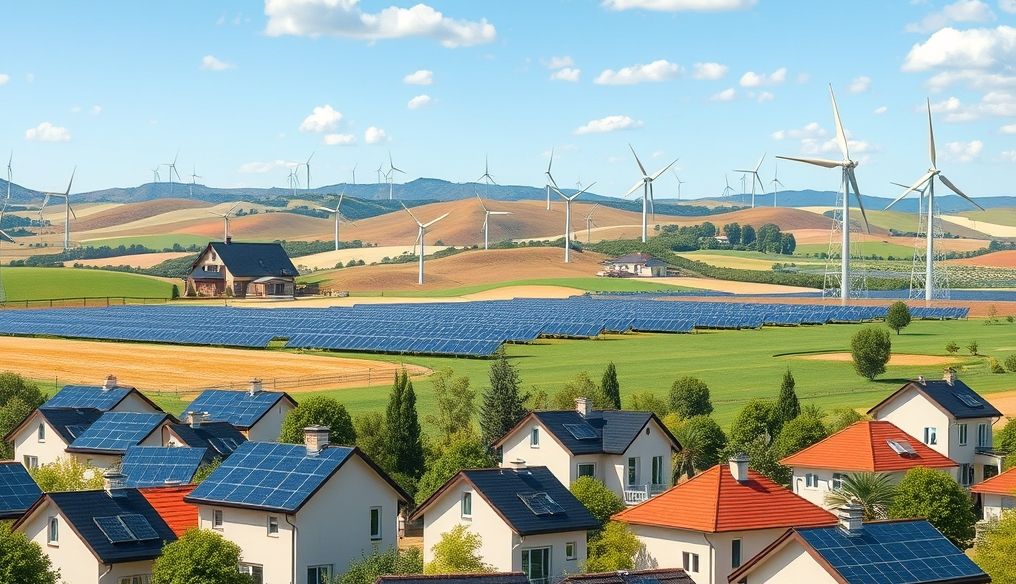What is Global Warming?
Global warming is a gradual increase in the Earth's atmospheric and oceanic temperature, mainly due to the increase in greenhouse gas emissions resulting from human activities, such as burning fossil fuels (coal, oil, and natural gas), deforestation, and industrial processes.
What are Greenhouse Gases?
Greenhouse gases are components in the atmosphere that absorb and re-emit infrared radiation from the Earth's surface. This absorption traps heat in the atmosphere, leading to an increase in the planet's temperature. Major greenhouse gases include:
- Carbon Dioxide (CO2): The main product of burning fossil fuels and deforestation.
- Methane (CH4): Produced by agriculture, animal husbandry, and waste decomposition.
- Nitrous Oxide (N2O): Produced by the use of nitrogen fertilizers and industrial processes.
- Fluorinated Gases (CFCs, HFCs, PFCs): Used in refrigeration, air conditioning, and industrial processes.
Causes of Global Warming
There are many reasons that contribute to the exacerbation of global warming, the most important of which are:
Burning Fossil Fuels
Burning coal, oil, and natural gas to generate energy is one of the largest sources of carbon dioxide emissions. These fuels are widely used in power plants, transportation, and industry.
Deforestation
Forests play a vital role in absorbing carbon dioxide from the atmosphere. Deforestation reduces the Earth's ability to absorb this gas, leading to its accumulation in the atmosphere.
Agriculture
Agricultural practices, such as the use of nitrogen fertilizers and animal husbandry, contribute to the emission of methane and nitrous oxide gases.
Industrial Processes
Some industrial processes release potent greenhouse gases, such as fluorinated gases, which have a high heat-trapping capacity.
Effects of Global Warming
Global warming has devastating and widespread effects on the environment, economy, and society. Some of these effects include:
Sea Level Rise
The increase in Earth's temperature leads to the melting of glaciers and ice sheets, which increases the volume of water in the oceans and raises sea levels. This threatens low-lying coastal areas with submersion and flooding.
Changes in Weather Patterns
Global warming leads to changes in weather patterns, such as an increase in the frequency and intensity of extreme weather events, such as heat waves, droughts, floods, and hurricanes.
Impacts on Agriculture
Climate change affects the productivity of agricultural crops, threatening food security. Some areas may become unsuitable for agriculture due to drought or flooding.
Impacts on Health
Global warming increases the spread of heat-related diseases, such as heatstroke and dehydration. It also increases the spread of insect-borne diseases, such as malaria and dengue fever.
Impacts on Biodiversity
Climate change leads to the loss of natural habitats and the degradation of ecosystems, threatening the survival of many plant and animal species.
Health Effects of Global Warming
The impact of global warming is not limited to the environment; it extends to human health directly and indirectly. Here are some of the main health effects:
Heat-Related Illnesses
Extreme heat waves are more frequent and intense due to global warming, increasing the risk of heatstroke, dehydration, and heat exhaustion, especially among the elderly, children, and people with chronic diseases.
Respiratory Diseases
High temperatures increase levels of air pollution, including ground-level ozone and particulate matter, which exacerbate respiratory diseases such as asthma and bronchitis.
Insect-Borne Diseases
Rising temperatures help expand the range of disease-carrying insects, such as mosquitoes and ticks, increasing the risk of diseases like malaria, dengue fever, and Lyme disease.
Food Security and Nutrition
Climate change affects food production, leading to food shortages and malnutrition, especially in developing countries.
Economic Impacts of Global Warming
Global warming has significant economic impacts that go beyond the direct costs of natural disasters. Some of these impacts include:
Damage to Infrastructure
Floods, hurricanes, and sea-level rise cause extensive damage to infrastructure, such as roads, bridges, buildings, and ports, requiring significant investments for reconstruction and repair.
Losses in Agricultural Productivity
Climate change leads to a decline in agricultural crop productivity, affecting food security and increasing food prices.
Impacts on Tourism
Tourism is significantly affected by climate change, as some destinations become less attractive due to rising temperatures or environmental degradation.
Increased Healthcare Costs
Diseases associated with climate change increase healthcare costs.
What Can We Do to Reduce Global Warming?
Reducing global warming requires global efforts from governments, companies, and individuals. Some of the main actions include:
Transition to Renewable Energy Sources
We must shift from fossil fuels to renewable energy sources, such as solar, wind, and hydropower.
Improve Energy Efficiency
We can reduce energy consumption by improving energy efficiency in buildings, transportation, and industry.
Protect Forests and Plant Trees
We must protect existing forests and plant more trees to absorb carbon dioxide from the atmosphere.
Change Consumption Patterns
We can reduce our carbon footprint by changing consumption patterns, such as reducing meat consumption and using sustainable transportation.
Support Government Policies
We must support government policies aimed at reducing greenhouse gas emissions and promoting sustainability.
The Role of Technology in Combating Global Warming
Technology plays a crucial role in developing innovative solutions to combat global warming. Some promising technologies include:
Carbon Capture and Storage
This technology allows carbon dioxide to be captured from power plants and factories and stored underground to prevent it from reaching the atmosphere.
Nuclear Energy
Nuclear energy is a low-carbon energy source that can contribute to reducing reliance on fossil fuels.
Batteries and Energy Storage
Batteries and energy storage technologies are essential for storing renewable energy and making it available when needed.
Smart Agriculture
Smart agricultural technologies help improve resource efficiency and reduce greenhouse gas emissions from agriculture.
Conclusion
Global warming is a global challenge that requires urgent and comprehensive solutions. By adopting sustainable practices and investing in clean technologies, we can protect our planet for future generations. Each individual must play their role in this collective effort to ensure a sustainable future for all.




